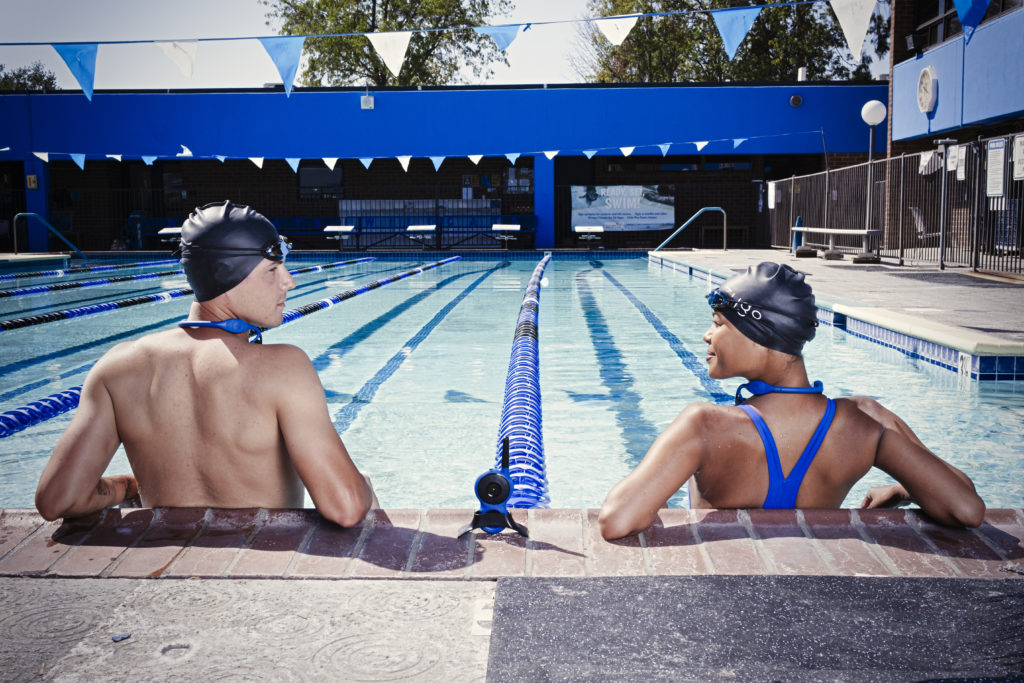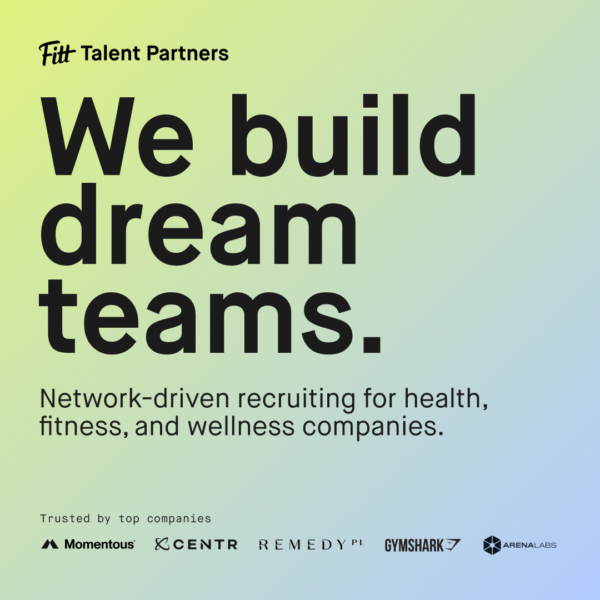Startup Q&A is an interview series showcasing health, fitness, and wellness companies.
In this Q&A, we caught up with Sheera Goren, co-founder and CEO of Zygo, maker of a wearable headset capable of streaming audio underwater. Sheera discusses solving swimming’s loneliness problem with music, podcasts, and real-time coach instruction while declaring connected swimming classes the next big thing in fitness.
Can you tell us about what you’re working on at Zygo?
SG: Zygo is the first, and only, option for streaming audio and live communication underwater.
Utilizing radio frequency, our patented technology allows you to play music, a podcast, an audiobook, or our app of guided content directly from a swimmer’s phone into the pool. In addition, there is a push-to-talk feature that allows coaches to communicate with swimmers in real time for training or instruction.
Today, the only other options are MP3 players, which in our opinion, are relics of the past. Very few people own or download music, let alone plug in a device to locally store audio. We stream all day long, so why should that stop at the edge of the pool or the start of a shoreline?
One could also argue that our biggest competitor is non-consumption. In stark contrast to running, for example, people have accepted the fact that they can’t enjoy audio in the water.
Our mission is to make underwater streaming audio as ubiquitous as streaming content for a run or a bike ride.
How did you come up with the idea? What key insight led you to pursue this opportunity?
SG: We simply wanted to get into triathlons and realized while we consume every single type of boutique fitness, we had no option for swimming. After attempting and failing to find a class, we decided to start our own, called SwimTeam, and created the category on ClassPass.
We hacked together a headset to deliver audio and instruction underwater, trained up actors that had swim backgrounds, and rented some pool time to see if this class would catch on. While it did, we were limited by pool time, and the biggest takeaway was everyone asking us to buy the headset equipment for their own daily use.
Swimmers wanted to stream music, and coaches wanted to talk to their athletes directly. We quickly saw a much larger opportunity in the hardware, and while we still believe in the class concept, the headset was the key to unlocking this potential.
To us, there is something incredibly exciting about the water—both pools and open water—but there’s also something intimidating about it, which makes a community particularly important. There’s also a barrier to entry that exists today due to perceptions that it’s lonely, boring, intimidating, and inconvenient.
We want to break down this barrier, writing a new narrative about the water being the new fitness frontier, the next source of athletic adventure. To do so, we need to prove that swimming (and any activity) is enjoyable with the right mix of inspiration and instruction — two ingredients that are currently missing.
We believe swimming will have its moment, much like running’s renaissance, once more people can properly enjoy the sport.
How did you turn your idea into a company?
SG: The origin of transitioning from SwimTeam to Zygo felt organic based on the requests of consumers to have a streaming option in the pool.
However, I do believe our naïveté around what it takes to build a hardware product from scratch worked to our benefit — not knowing the obstacles sometimes help you break through them!
The first phase was finding the right team to help us build the product. This included industrial, mechanical, and electrical engineers, all highly skilled in their respective domains, as well as a good contract manufacturer overseas.
After three years of testing, validating, and even changing designs for performance, we finally felt ready to run an Indiegogo campaign, mostly for initial consumer validation.
Along with our small friends-and-family round, this put us in a solid position and we sold through our first 1,000 units in less than 30 days. The next milestone was delivering those units, which took another year, and they finally shipped in September of 2020.
Having our first customer receive, use, and provide feedback on the product was an exciting moment within the company. The first year solidified our idea and product-market fit, as we simply could not keep up with the demand.
The next seed round happened a lot quicker with sales to point to. Unlike our previous round, this closed in a month and put us in a strong position to get through 2022.
We finally hired our first employee to help with reverse logistics and customer service and are looking to scale further this upcoming year, including product enhancements, launches, and internal company growth. Our next target will be achieving $5M in sales.
How big can this get? What’s the addressable market and how do you go about capturing it?
SG: Today, over 205M people worldwide swim or participate in other water sports such as windsurfing, kitesurfing, stand-up paddleboarding, surfing, rowing, and sailing. Forecasts across categories show increasing participation as people embrace health and wellness, particularly low-impact fitness.
If we capture 1% of this TAM, Zygo is a $500M business. However, our vision includes not only appealing to today’s swimmers but also inspiring new populations of people who have high expectations for fitness and refuse to do silent laps back and forth.
We’re confident that people who run and spin will embrace swimming once it becomes as entertaining and social. They’re desperate for a way to simply play music, podcasts, audio books, etc., not to mention the coaching aspect of Zygo.
In addition, with our app, the growth is exponential. Showcasing how good content can drive behavior along with new features like metric tracking and gamification will have a lot of similar benefits that connected hardware has seen on land.
Most importantly, this is how we drive community and make our company not just a product but a brand.
Who is the core customer? How are you acquiring customers? And how will you grow the customer base?
SG: Today, recreational swimmers and triathletes are buying Zygo to fight the boredom and loneliness of swimming. This is the initial low-hanging fruit, as there is no behavior change or education needed.
We have spent limitedly on social media and Google, but the encouraging part has been microcommunities that have popped up nationally. Prospective customers see others using it at their public pools and talk about it, maybe try it risk-free, and then purchase. We have seen early on how powerful word of mouth can be.
Another customer segment is coaches of swimming at every level, from teaching newbies to enhancing the training of elite athletes. We have also seen some success with swim teams and groups, however, this marketing channel is heavily reliant on in-person demos and conversations, which have taken a back seat due to the pandemic.
Our aspirational customer is the person who may spin one day a week, run another, and knows swimming is good for them but lacks the inspiration. This person, armed with our technology, feels he/she/they could now tackle the water. We believe this latent consumer will change how people think about the market size.
Looking at your road map, what are some of the milestones you’re targeting over the next 3-6 months?
SG: Our product roadmap for the next six months includes improving hardware by launching a larger size and a pro case that has built-in battery. We’ll be rolling out software updates, with app features including metric tracking, battery indicator, and more gamification aspects.
And we’ll be greatly increasing our inventory — we are slated to put in our biggest order of 10K units in late Q1/early Q2, which will be a big milestone for our production scalability.
Anything else you’d like to share with readers?
SG: We are bullish (and biased), but swimming is the next frontier in fitness. And soon, with Zygo, everyone will marvel at how they lived so long in silence underwater. It’s part of the motivation behind our tagline “Go Louder.”
If you’re interested in having your company featured in our Startup Q&A series, send an email to team@fitt.co.
Related reading from Fitt Insider:
Issue No. 118: Music as a Moat
Issue No. 166: Next-Gen Health Wearables
 Zygo
Zygo



